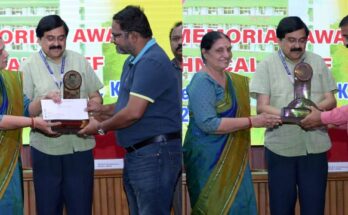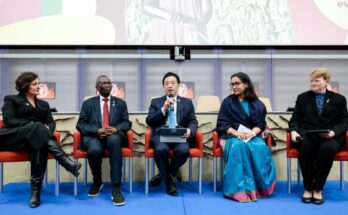Indian Council of Agricultural Research and World Bank jointly launched a ‘Blended Learning Ecosystem in Agriculture’ platform focused on improving digital infrastructure across Agricultural Higher Education Institutions (A-HEIs) during an international conference jointly organised by both organisations in New Delhi on Tuesday. The platform aims to strengthen the deployment of immersive technologies such as augmented reality (AR)/virtual reality (VR) experiences and virtual classrooms.
The international conference on Blended Learning Ecosystem for Higher Education in Agriculture 2023 is being organised from March 21-23 as a part of the National Agricultural Higher Education Project’s (NAHEP) Resilient Agricultural Education System (RAES) development initiative has more than 10 academic partners from around the world representing over 10 countries deliberating on the best strategies in blended teaching and learning in agricultural education.
Undertaken to strengthen the National Agricultural Education System in the country, NAHEP is a five-year project initiated in 2018 with an equal contribution of $82.5 million (about Rs 600 crore) each from the World Bank and the Government of India. The World Bank loan is to be repaid over 19 years after a grace period of five years. The purpose of NAHEP is to transform agricultural higher education. The Blended Learning Platform is part of the project.
You may also like to read – Incentivising agri-seed research & development is key to food security: Study
About 1,000 students and 450 faculty members from 20 agricultural universities have completed international training at 89 institutes in 27 countries in 160 subjects under NAHEP to date. More than 900 experiential learning units where students can get hands-on experience for six months and become proficient in subjects as diverse as genomics and tea processing have been set up at various universities. The digital content repository has more than 160 digitised courses and faculty members have uploaded more than 10,000 videos.
Addressing the conference, Union Minister of Agriculture and Farmers Welfare, Narendra Singh Tomar said, “Since the past five years, the ICAR has reached a new height. When we launched Krishi Megh nobody knew it would act as a game-changer during the pandemic as it did not let India’s education system be as adversely affected as other countries. I believe even in the future; it will help us achieve many new accolades. Blended learning in agriculture will help India become a developed nation by 2047. Agriculture, which is the backbone of India’s economy, can thrive with limited funding due to technology and knowledge. In line with ‘sabka saath, sabka vikas’ we make policies to ensure that people at the grassroot-level benefit from them.”
Dr Himanshu Pathak, Secretary Department of Agricultural Research and Education (DARE) and Director General, ICAR said, “I would like to thank the World Bank for being a committed partner to the Government of India. I believe it will further promote research and education. To address the challenges of climate change and low productivity, education will play a crucial role. Our young students as well as scientists need to be equipped to combat all problems and experiment to learn new things which can be done through a blended learning ecosystem.’’
You may also like to read – India’s carbon footprint from marine fisheries is much lower than global level: Study
Dr RC Agrawal, Deputy Director General – Agricultural Education, ICAR, “It has been our endeavour to enhance agricultural higher education in alignment with guidance from NEP 2020 and the UN-SDGs. All agricultural universities have access to e-learning and e-governance applications; they all have smart classrooms, video conferencing facilities and virtual reality experience labs. Eighty-six per cent of agricultural universities have academic management systems; 90 per cent have wi-fi on campus and 92 per cent have high-speed internet connectivity. The e-content, using virtual and augmented reality, is highly immersive. Assessments, including short and long answer type questions, have been digitised.’’
“The National Agriculture Higher Education Project (NAHEP) has achieved almost all targets and significantly exceeded more than half of them. The quality of students coming in is better, in that they have higher cut-off scores, the graduates have higher placement rates and the research is more effective,’’ said Dr. Bekzod Shamsiev, Senior Agriculture Economist, The World Bank. “The next challenge is to transform digital learning into digital agriculture. Agricultural universities have an important role to play in promoting precision farming, environmental monitoring and automation of agricultural processes. It should lead to better trading systems and market information, efficient supply chain logistics and provide information for better policymaking and regulation,’’ Dr. Shamsiev added.






Very good initiative. VR and AR will enhance the reach and value of agricultural education in the country. The project will be benefited by vast pool of expertise available in agricultural sciences in India.